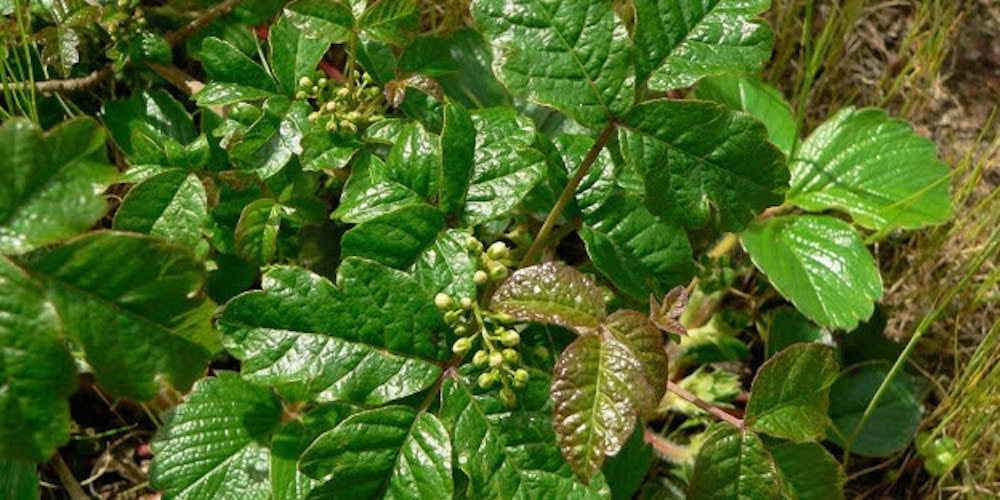|
Be on the lookout for poison oak warns California Poison Control System (CPCS), a part of the University of California San Francisco School of Pharmacy and is responsible to the California Emergency Medical Services Authority. Poison oak is a serious threat especially to those who are allergic to the plant. Poison oak (Toxicodendron diversilobum) is found mainly in the western regions of the state of California growing from sea level to the mountains.
Grassy hillsides, forests, recreation areas and coastal locations are home to the plant. Identifiable by its climbing vine-like appearance, the University of California Agriculture and Natural Resources describes poison oak as forming a dense, leafy shrub from one to six feet high. Leaves normally consist of three leaflets with the stalk of the central leaflet being longer than those of the other two and it has either glossy or dull leaves. Exposure in allergic individuals can result in a rash about one to six days after coming in contact with the leaves that itches and then forms water blisters. The fluid from these blisters does not transmit poison oak as many people think. Repeated exposure does, unfortunately, increase sensitivity.
Poison oak tips include:
0 Comments
Leave a Reply. |
|


 RSS Feed
RSS Feed